Africa, renowned for its stunning landscapes and iconic wildlife, is home to a fascinating array of wild cat species. While the “Big Five” often steal the spotlight, a diverse group of smaller and medium-sized felines quietly thrives across the continent. These African Wild Cats, though often elusive and less known, are equally captivating and play crucial roles in their respective ecosystems. From the mighty lion to the tiny black-footed cat, each species showcases unique adaptations and faces similar threats, primarily habitat loss and human encroachment. Let’s delve into the captivating world of these ten african cat species, as recognized by the Cat Classification Task Force of the IUCN’s Cat Specialist Group, and explore their characteristics, habitats, and conservation statuses.
Africa’s Big Cat Giants
1. The African Lion – Panthera leo
 big cats lions
big cats lions
The African lion, the undisputed king of the jungle and the largest african wild cat, reigns supreme as Africa’s apex predator. Second in size only to the tiger globally, these iconic big cats are not just symbols of power and majesty, but also vital components of their ecosystems. Uniquely social among cat species, lions live in prides, cooperative groups that enhance their hunting success and territorial defense. A sighting of these magnificent creatures is often the highlight of any African safari, embodying the wild spirit of the continent.
However, the roar of the lion is becoming increasingly faint across Africa. Once ranging widely, lion populations have suffered drastic declines due to habitat fragmentation, human-wildlife conflict, and prey depletion. Estimates suggest that fewer than 20,000 wild lions remain in Africa, a stark contrast to historical numbers. Classified as ‘vulnerable’ on the IUCN Red List, the future of these kings of african wild cats hangs in the balance, demanding urgent and concerted conservation efforts.
2. The Elusive African Leopard – Panthera pardus pardus
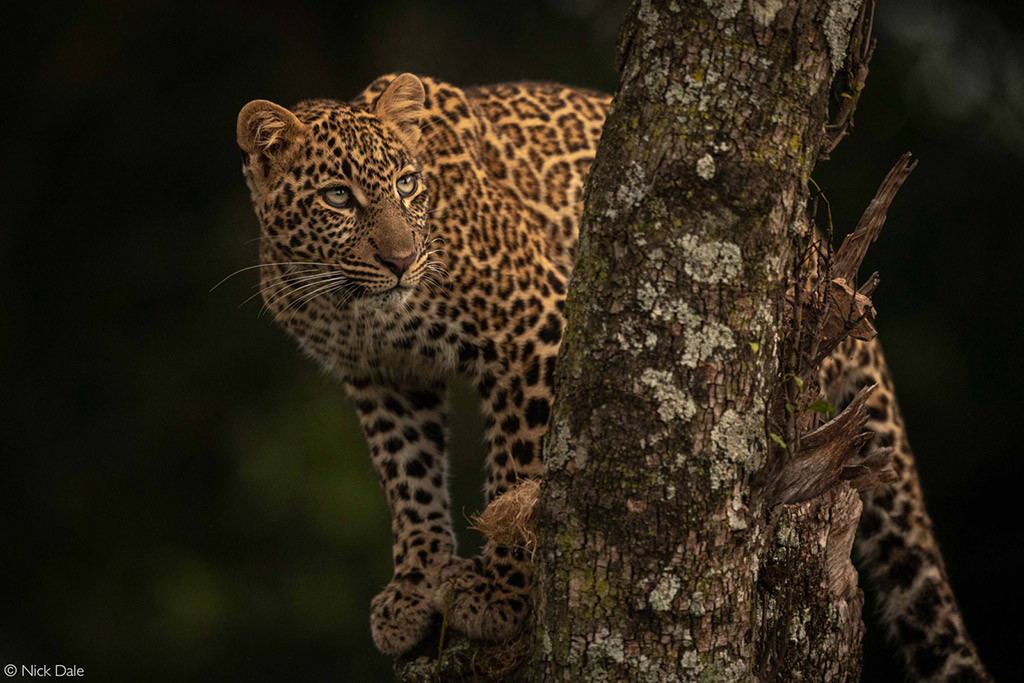 big cats leopard
big cats leopard
Graceful, powerful, and remarkably adaptable, the African leopard is a solitary and secretive african wild cat that thrives in a wide array of habitats, from rainforests to deserts. Its exquisite rosetted coat provides exceptional camouflage, making it a highly successful ambush predator. Leopards are renowned for their strength, capable of hauling prey twice their weight into trees to safeguard their meals from scavengers like hyenas and lions. This arboreal prowess, combined with their stealth and agility, makes them formidable hunters.
While the African leopard is recognized as a subspecies, genetically, leopards across Africa and Asia are considered the same species, granting them the most extensive distribution of all big cats. Despite their adaptability, leopard populations are facing threats from habitat loss, poaching for their skins and body parts, and conflict with humans. Due to their elusive nature, accurate population estimates are challenging, but they are classified as ‘vulnerable’ on the IUCN Red List, highlighting the need for ongoing conservation attention for these magnificent african wild cats.
3. The Lightning-Fast Cheetah – Acinonyx jubatus
 big cats cheetah
big cats cheetah
The cheetah, the world’s fastest land mammal, is a truly unique african wild cat, built for speed and daylight hunting. Distinct from other big cats in its slender build and spotted coat, the cheetah relies on its incredible velocity to chase down prey across open grasslands and savannas. The characteristic “tear marks” running from their eyes down their muzzle are believed to reduce sun glare during daytime hunts, aiding their vision. Despite their hunting prowess and high success rate, cheetahs are often outcompeted by larger predators, frequently losing their kills to lions and hyenas.
With an estimated wild population of around 7,000 individuals, cheetahs are considered the most endangered of the African big cats. Habitat loss, human encroachment, and low genetic diversity pose significant threats to their survival. Classified as ‘vulnerable’ on the IUCN Red List, conservation efforts are crucial to secure a future for these specialized and vulnerable african wild cats, ensuring their continued presence in Africa’s landscapes.
Medium-Sized Marvels of African Wildlife
4. The Elegant Serval – Leptailurus serval
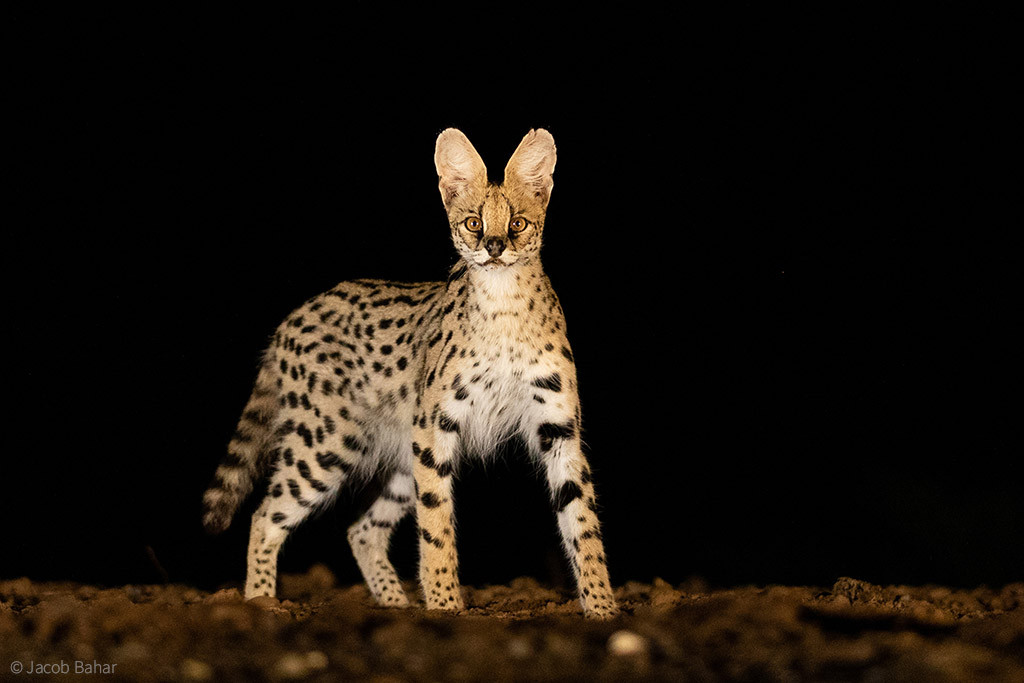 big cats
big cats
The serval, a strikingly elegant medium-sized african wild cat, is characterized by its long legs, large ears, and spotted coat, sometimes leading to mistaken identity with cheetahs. However, servals are considerably smaller and lighter, perfectly adapted for hunting rodents and small prey in tall grasslands and wetlands. Their exceptionally large ears are crucial for pinpointing the faintest sounds of prey hidden in dense vegetation, while their long legs enable them to leap high into the air to capture birds and rodents.
Servals are widespread across sub-Saharan Africa, and while their exact population numbers are unknown, they are believed to be stable in many regions. The IUCN Red List currently classifies them as being of ‘least concern’. However, habitat degradation and wetland conversion pose potential threats, and ongoing monitoring is essential to ensure the continued conservation of these graceful african wild cats.
5. The Regal Caracal – Caracal caracal
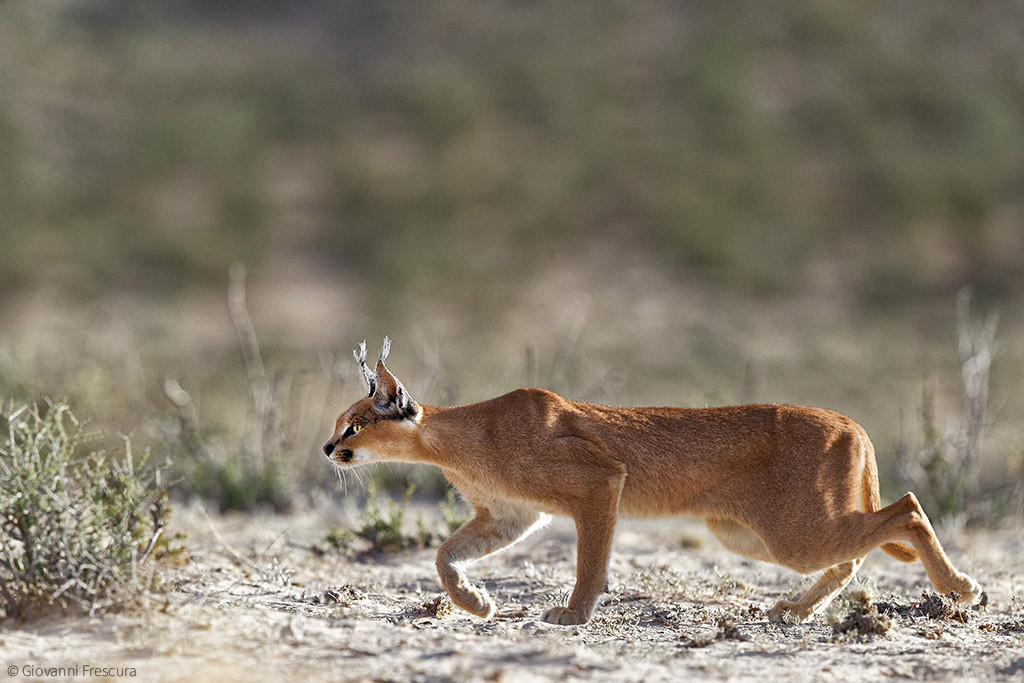 big cats
big cats
The caracal, with its reddish coat and distinctive long black ear tufts, exudes a regal air among african wild cats. Slightly stockier than the serval, caracals are powerful jumpers and hunters, preying on small mammals, rodents, and birds, sometimes even tackling larger prey like young antelope. Their impressive jumping ability allows them to snatch birds in flight, showcasing their agility and hunting skills.
Caracals inhabit a variety of habitats across Africa, from arid regions to woodlands. While their overall conservation status is listed as ‘least concern’ by the IUCN Red List, local populations may face threats from habitat loss and persecution as livestock predators in some areas. Continued monitoring and habitat protection are important for maintaining healthy populations of these striking medium-sized african wild cats.
6. The Elusive African Golden Cat – Caracal aurata
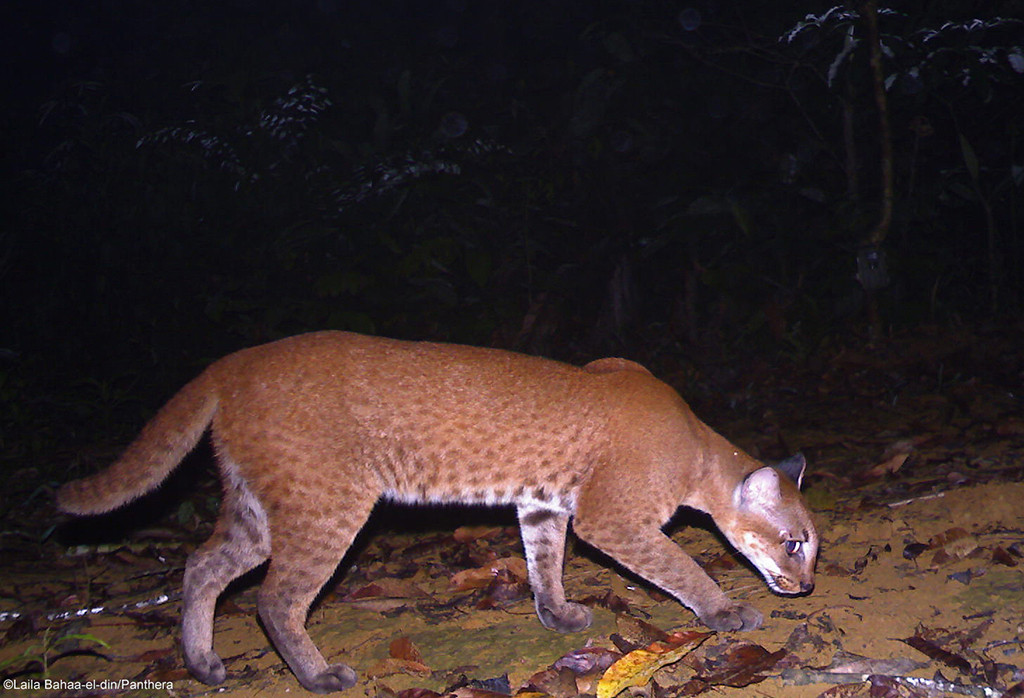 African golden cat
African golden cat
The African golden cat is perhaps the least known and most elusive of the african wild cats. Endemic to the dense rainforests of West and Central Africa, this medium-sized feline is shrouded in mystery, with researchers still piecing together information about its behavior and ecology. Camera traps have been instrumental in providing glimpses into their secret lives, revealing their hunting habits and habitat preferences. Closely related to the caracal, the golden cat shares a similar build but lacks the distinctive ear tufts.
Habitat loss due to deforestation and bushmeat hunting are significant threats to the African golden cat. Classified as ‘vulnerable’ on the IUCN Red List, this beautiful and secretive african wild cat requires urgent conservation attention to ensure its survival in the face of increasing environmental pressures and human activities within its rainforest home.
Africa’s Small and Secretive Felines
7. The Adaptable Jungle Cat – Felis chaus
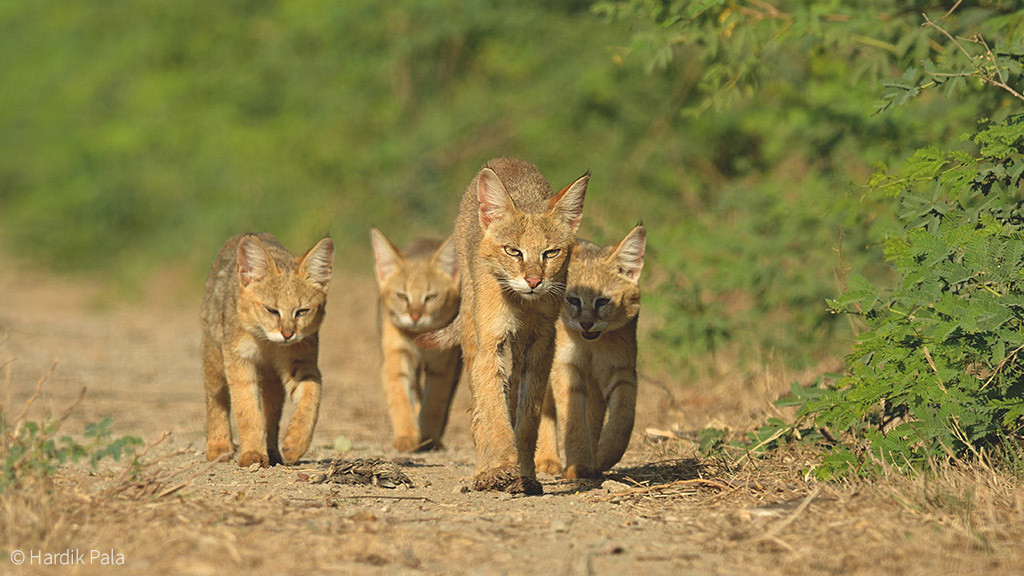 Jungle cat
Jungle cat
The jungle cat, also known as the swamp or reed cat, is a small but robust african wild cat with a wider distribution extending beyond Africa into the Middle East and Asia. In Africa, it is primarily found in the wetter regions of Egypt, particularly along the Nile Delta, inhabiting dense vegetation in wetlands and riverine areas. Jungle cats are adept hunters of small rodents, birds, and other small animals found in their wetland habitats.
While listed as ‘least concern’ on the IUCN Red List, habitat loss and degradation of wetland ecosystems pose potential threats to jungle cat populations in Africa. Conservation efforts focused on protecting and restoring wetland habitats are crucial for the continued survival of these adaptable small african wild cats in the African continent.
8. The Ancestral African Wildcat – Felis lybica
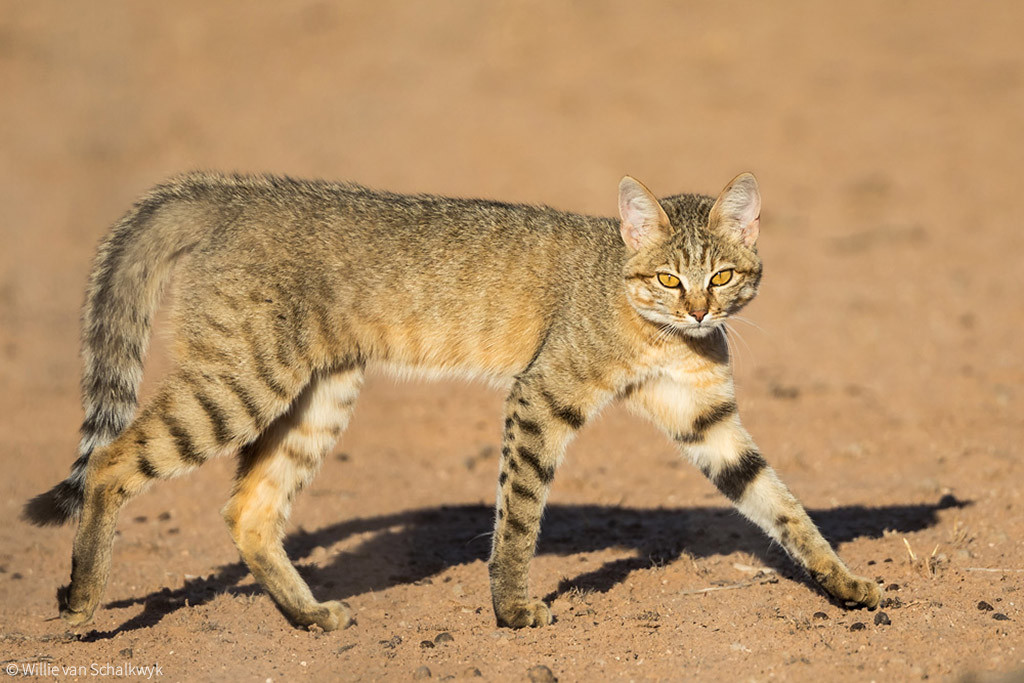 African wild cat
African wild cat
The African wildcat holds a special place among african wild cats as the ancestor of our beloved domestic cats. Resembling domestic cats in appearance, they can be differentiated by their slightly longer legs, banded markings, and reddish ear backs, though identification can be challenging. The greatest threat to African wildcats is hybridization with domestic cats, leading to genetic pollution that erodes the wild gene pool.
While currently classified as ‘least concern’ on the IUCN Red List, the African wildcat’s genetic integrity is increasingly vulnerable. Recognizing and mitigating hybridization, along with habitat protection, are crucial for conserving the distinct genetic heritage of these ancestral small african wild cats and ensuring the preservation of their wild form in Africa.
9. The Desert-Dwelling Sand Cat – Felis margarita
 An adult sand cat
An adult sand cat
The sand cat is a remarkable small african wild cat uniquely adapted to survive in the harshest desert environments of Africa and Asia. Its pale sandy coat provides excellent camouflage, while thick fur on its paws protects them from scorching sand and extreme temperature fluctuations. Sand cats have exceptional hearing, crucial for detecting prey beneath the sand, thanks to enlarged ear canals. They are remarkably resilient to water scarcity, obtaining most of their hydration from their prey.
Despite being classified as ‘least concern’ on the IUCN Red List, sand cats are elusive and difficult to study in their remote desert habitats. Threats include habitat degradation and human encroachment into desert areas. Conservation efforts should focus on understanding their populations and mitigating habitat threats to ensure the continued survival of these uniquely adapted small african wild cats in their challenging desert realms.
10. The Tiny Black-Footed Cat – Felis nigripes
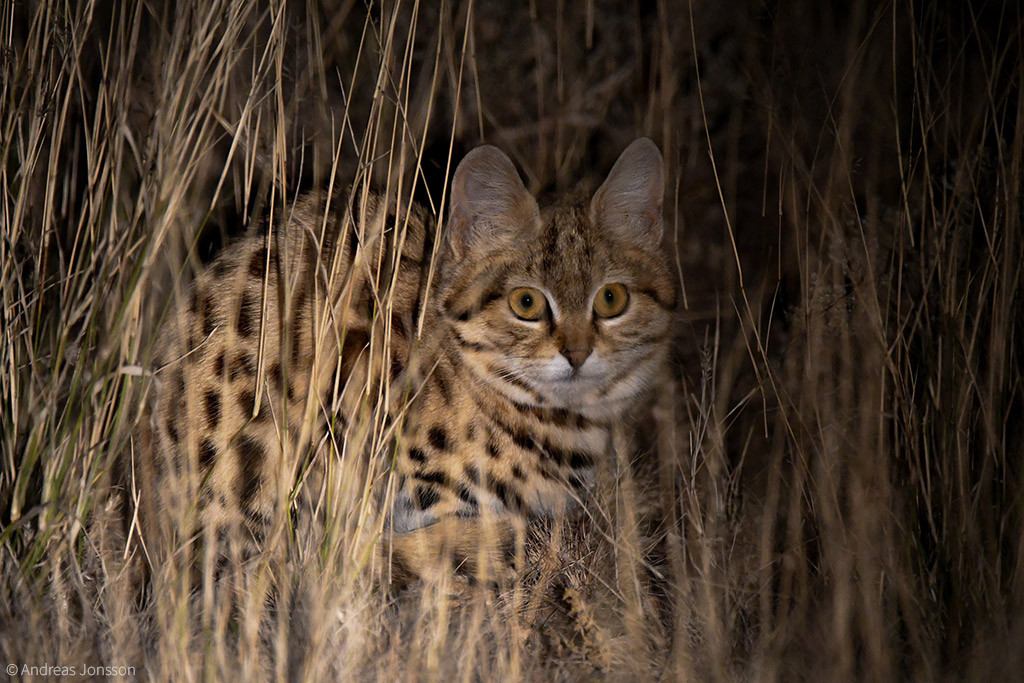 Black-footed cat
Black-footed cat
The black-footed cat, the smallest african wild cat and one of the smallest wild cats globally, is endemic to the arid regions of southern Africa. Despite their diminutive size, weighing less than 2kg, they are reputed to be fiercely independent and incredibly effective hunters, earning them the nickname “anthill tiger”. These nocturnal felines are rarely seen, adding to their mystique.
Black-footed cat populations are estimated to be less than 10,000 mature individuals and are declining, leading to their classification as ‘vulnerable’ on the IUCN Red List. Habitat degradation, prey depletion, and threats from introduced predators pose challenges to their survival. Conservation efforts are essential to protect these tiny but tenacious african wild cats and secure their place in the biodiversity of southern Africa.
Conclusion:
The african wild cats of Africa represent a stunning spectrum of feline diversity, from the iconic big cats to the lesser-known small and medium-sized species. Each cat, with its unique adaptations and ecological role, contributes to the richness of African ecosystems. However, these magnificent creatures face increasing threats, primarily from habitat loss and human activities. Understanding and appreciating the diversity of african wild cats, and supporting conservation efforts, is crucial to ensuring that these fascinating felines continue to roam wild across the African continent for generations to come.


